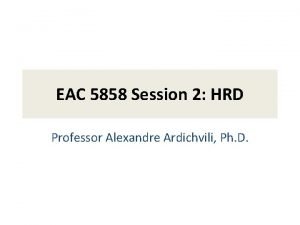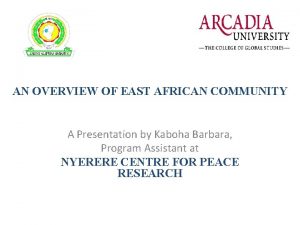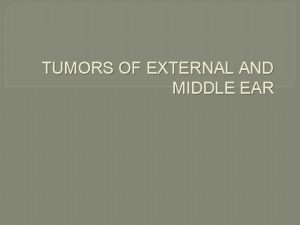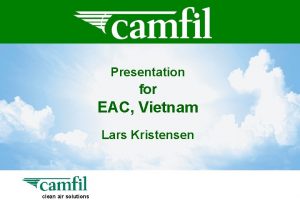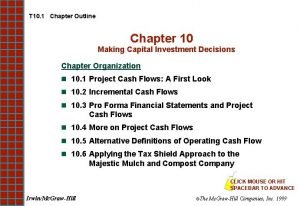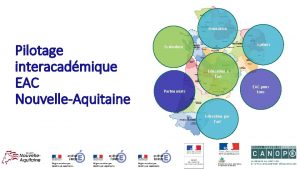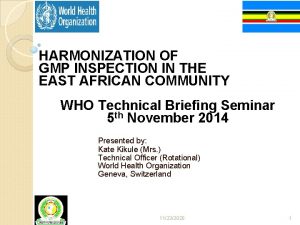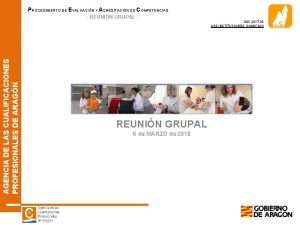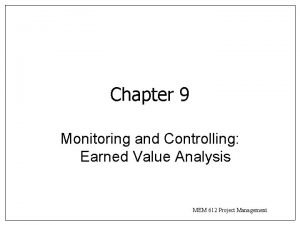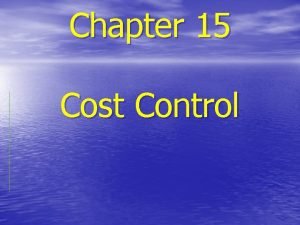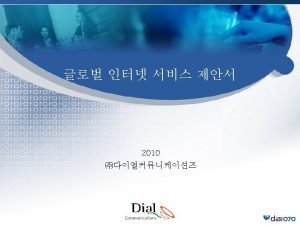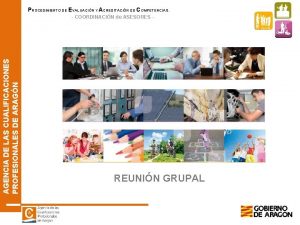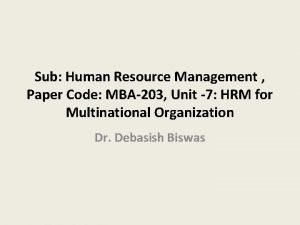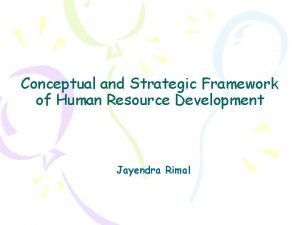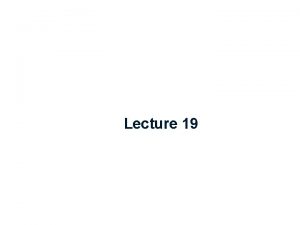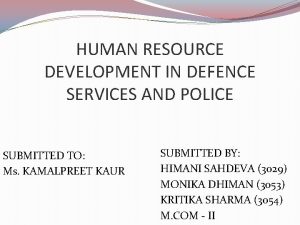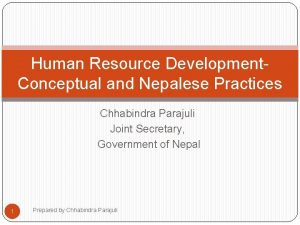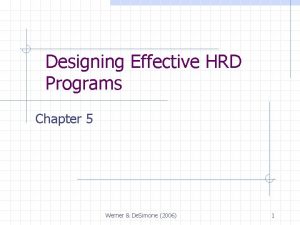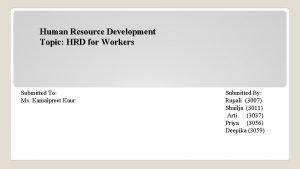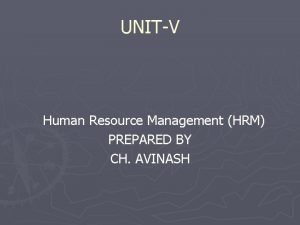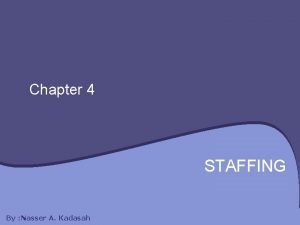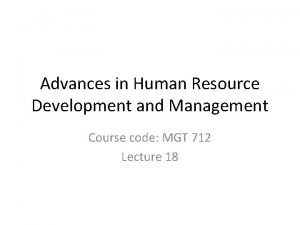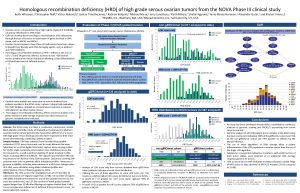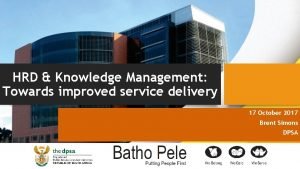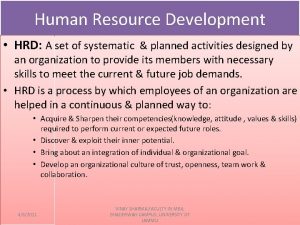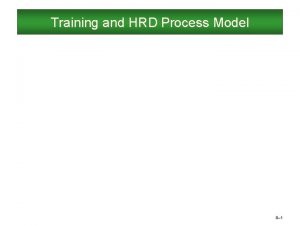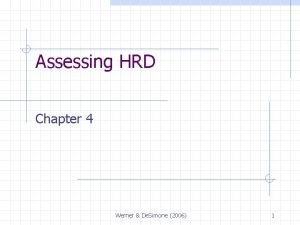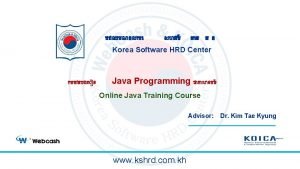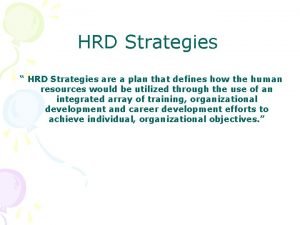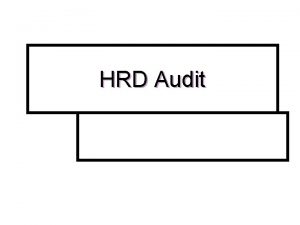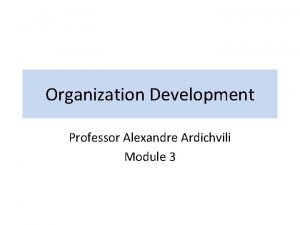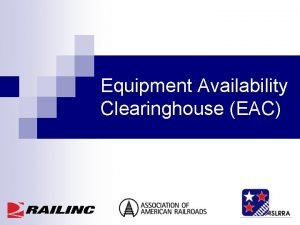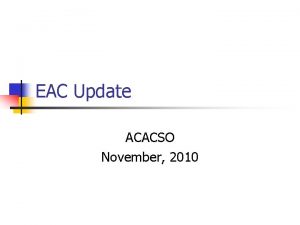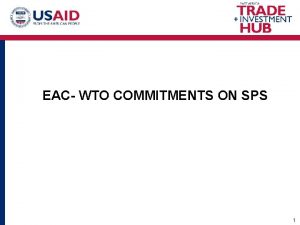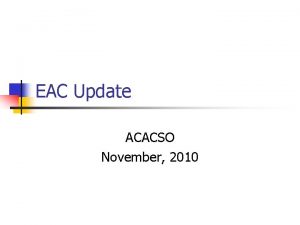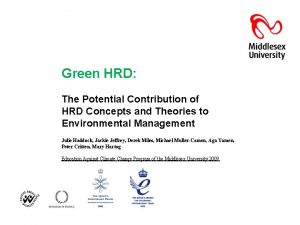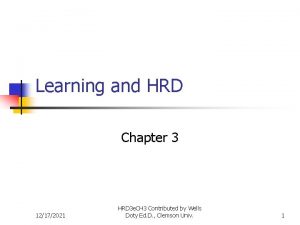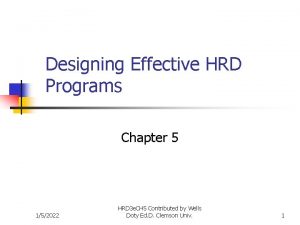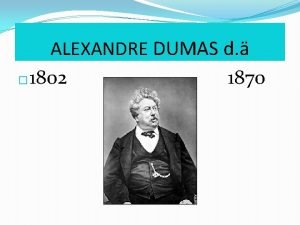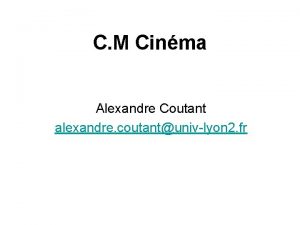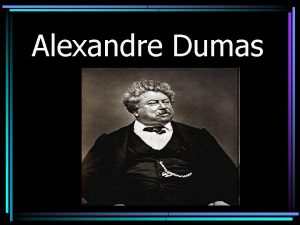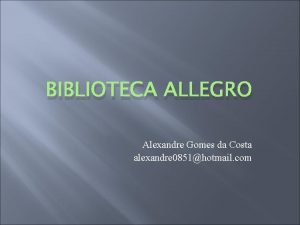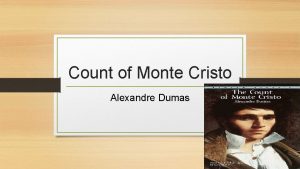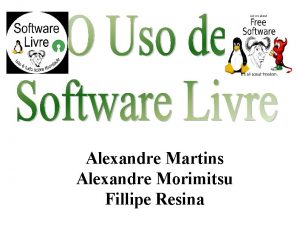EAC 5858 Session 2 HRD Professor Alexandre Ardichvili




































- Slides: 36

EAC 5858 Session 2: HRD Professor Alexandre Ardichvili, Ph. D.

Course Overview • • Module 1: Introduction (Prof. Cornachione) Module 2: HRD Module 3: OD Module 4: Leadership Module 5: International HRD Module 6: OL and KM Module 7: Org. culture and business ethics Module 8: Conclusion (Prof. Cornachione)

Teaching and Learning Approaches • Active participation • Constructivist paradigm • Use of active learning methods: – Case analysis and discussion – Socratic dialogue – Videos – view and discuss – Student-lead discussions

Introductions Briefly introduce yourself: • Your name • Your current program of study and stage in the program • Most relevant to this course experience • Anything else about yourself you would like to share

University of Minnesota • • • At a Glance. . . Established: 1851 One of “Big Ten” largest public universities Students: 40, 572 undergraduate students; 25, 527 graduate, professional, and other students Faculty: 4, 088 full-time faculty Alumni: 400, 000 alumni Research: $600 million/year in sponsored research awards 8 Nobel Prize laureates HRD Program: top 5 program in the US according to the US News and World Report; more than 200 graduate and 300 UG students


Twin Cities: Minneapolis and St. Paul • Population: 3 million people (metro area)


Home to 19 Fortune 500 companies, among them:

Twin Cities Businesses, Cont. • Numerous privately held companies, including world’s second largest (Cargill), and the Carlson Companies (#44 on the Forbes list). • Recently merged Fortune 500 firms; still maintain major presence in TC: Northwest Airlines (Delta); Wells Fargo (Norwest Bank); Honeywell (Allied Signal); St. Paul Companies (Travelers Insurance)

Definitions of HRD • “A set of systematic and planned activities designed by an organization to provide its members with the necessary skills to meet current and future job demands” (De. Simone & Harris, 1998). • Development of human expertise and potential to improve organizational performance (Swanson, 2009) • Includes: training & development; organization development (OD); career development (Mc. Lagan, 1989)

Pat Mc. Lagan Dick Swanson

The Relationship Between HRD and other HR-Related Functions

Historical Antecedents of HRD – Classical School ( late 1800 s to 1920 s) • Scientific mgmt (F. Taylor), industrial efficiency – Human Relations School (1920 s - 1950 s) • Emergence of social sciences, management sciences, t-groups, survey research – Human Resources School (1950 s - now) • Strategic orientation, socio-technical systems design

Five Stems of HRD and OD Practice Laboratory Training Current Practice Action Research/Survey Feedback Participative Management Quality of Work Life Strategic Change 1950 1960 1970 1980 1990 2000

Developments since the 1980 s Quality movement, TQM (Deming, Juran) Learning organization (P. Senge, MIT) Reengineering (M. Hammer, MIT) Globalization Technological change Changing organizational forms Knowledge economy, knowledge management Leadership and Leadership Development Virtual work, virtual organizations Ethics and Corporate Social Responsibility Employee Engagement

Strategic Role of HRD • Q: Based on today’s readings, how would you describe strategic role of HRD?


Value Disciplines (Treacy and Wiersema, 1993) • Operational Excellence • Customer Focus • Product Leadership • Need to be excellent at least in one (and at industry standards level in other two). Could be excellent at two, but it is much harder; three – almost impossible

Operational Excellence Goal: to lead the industry in price and convenience Corresponding Changes in Internal/Business Processes: pursue continuous improvement of production processes, minimize overhead costs, optimize business processes across functional boundaries, reduce transaction costs Examples: Dell, Wal-Mart; Federal Express

Dell: Revenues: $61 billion; 103, 000 employees

Wall-mart: Revenues: $422 billion; 2. 1 million employees; 7, 000 locations

Fedex: Revenues: $32 bil. ; Employees: 141, 000

Customer Focus Goal: Long-term Customer Loyalty Corresponding Changes in Internal/Business Processes: Extreme attention to detail in customer interactions, intimate knowledge of customer needs and preferences, detailed customer segmentation, tailored advertising, development of sophisticated customer information databases Examples: Home Depot; Nordstrom

Home depot: $68 billion; 320, 000 employees

Nordstrom: $8. 5 billion; 52, 000 employees • Employee handbook: (a 75 word card): • Welcome to Nordstrom • We're glad to have you with our Company. Our number one goal is to provide outstanding customer service. Set both your personal and professional goals high. We have great confidence in your ability to achieve them. • Nordstrom Rules: Rule #1: Use best judgment in all situations. There will be no additional rules. • Please feel free to ask your department manager, store manager, or division general manager any question at any time.

Product Leadership • Goal: To be the leader in producing state-of-the art products or services • Corresponding Changes in Internal/Business Processes: promote innovation and creativity; reduce the commercialization cycle; make own products obsolete; concurrent engineering • Examples: J&J; Apple

Johnson and Johnson: $62 billion; 118, 000 employees

Apple: $65 billion; 50, 000 employees

Value Innovation: Blue Sky Strategy (Kim and Mauborgne) Do not compete for existing markets/customers – make competition obsolete Offer radically different experience and value package Focus on what unites customers, not what is different Focus on what is the most important for the majority of customers Do not be constrained by existing assets/capabilities and industry boundaries

Four Questions • Which of the factors that our industry takes for granted should be eliminated? • Which should be reduced below standards? • Which should be raised above standards? • Which should be created?

Two Strategic Logics Industry assumptions: Are given? Or can be shaped? Strategic Focus: Build competitive advantage? Or make competition irrelevant? Customers: Segmentation and retention? Or new, broader, customer base? Assets and Capabilities: Leverage existing ones, or find out what you need to start anew? Products/Services: Industry’s boundaries determine the choices?

Formule 1 (Accor Hotels) Factors to Keep/Eliminate/Enhance: – Excellent Beds/Mattresses – 24 hour attendant? – Restaurant in the hotel? – Clean rooms – TV in rooms? – Large, comfortable common area? – Writing desk and tables in rooms? – Easy check in/check out

Formule 1 Value Curve

Key Decisions How are key people: • Selected? • Trained? • Compensated? • Measured?

Evolution of the HR function and of HR/HRD professional’s KSAs • Control (technical skills) • Service (technical plus credibility and people skills) • Decision-making (strong analytic skills, knowledge of HC analysis theory and methods)
 Alexandre ardichvili
Alexandre ardichvili Promotion from associate professor to professor
Promotion from associate professor to professor Eac mission and vision
Eac mission and vision Browns sign glomus tumor
Browns sign glomus tumor Eac vietnam
Eac vietnam Eac aims
Eac aims Problem 10-18 calculating eac..
Problem 10-18 calculating eac.. Piliers eac
Piliers eac Eac gmp guidelines
Eac gmp guidelines Eac
Eac Servicios aragon es eac webpeac
Servicios aragon es eac webpeac Etc vs eac project management
Etc vs eac project management Estimate at completion (eac) is a periodic evaluation of
Estimate at completion (eac) is a periodic evaluation of Eac cable
Eac cable Servicios aragon es eac webpeac
Servicios aragon es eac webpeac Staffing involves
Staffing involves Sub human resources
Sub human resources Conceptual framework of human resource development
Conceptual framework of human resource development Scope of hrd
Scope of hrd Task analysis in hrd
Task analysis in hrd Hrd meaning police
Hrd meaning police Hrd practices in nepalese organization
Hrd practices in nepalese organization Designing effective hrd programs pdf
Designing effective hrd programs pdf Hrd for workers
Hrd for workers Project appraisal meaning
Project appraisal meaning Hrd subsystems
Hrd subsystems Hrd network
Hrd network Hrd process
Hrd process Hrd manager role
Hrd manager role Implementing hrd programs
Implementing hrd programs Hrd score ovarian cancer
Hrd score ovarian cancer Hrd delivery
Hrd delivery Hrd subsystem
Hrd subsystem Prioritizing hrd needs
Prioritizing hrd needs Assessing hrd needs
Assessing hrd needs [email protected]
[email protected] Hrd strategies
Hrd strategies
